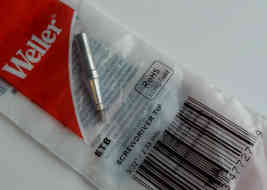Tinning a soldering iron means putting a small amount of solder on the hot iron tip (also known as an iron bit of the soldering iron).
Tinning a soldering iron is the process of coating its tip with a layer of molten solder. The name “tinning” comes from the fact that the alloy of solder consists of tin and lead combination.
The solder melts and flows around the iron tip. The solder should cover all surfaces of the iron tip.
Learning how to tin a soldering iron takes just a couple of minutes.
The tinning of soldering iron is a simple process. It is not as scary or as difficult as you may be thinking.
The most popular in the USA

Weller WE1010 solder station

Hakko FX-888D soldering station

Weller WLC100 (cheap solder iron)

















